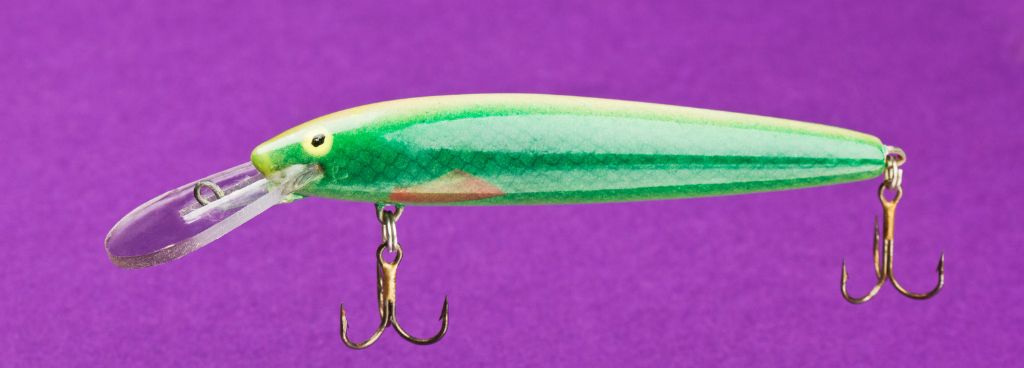Stories Worth Reeling In...
Last Updated on September 22, 2023
Are you ready to take your fishing game to the next level? Imagine the thrill of catching fish with lures that you crafted with your own hands. In this blog post, we’ll dive into the exciting world of making fishing lures at home.
Get ready to unleash your creativity and discover the art of customizing lures tailored to your angling style and target species.
Table of Contents

When you make fishing lures at home, you’re not only saving money but also gaining complete control over the design and components of your lures. Commercial lures can be expensive, and their designs may not always suit your fishing style or the unique conditions of your favorite fishing spots. By crafting your own lures, you can tailor them to your specific needs and preferences while saving a few bucks along the way.
One of the greatest advantages of making fishing lures at home is the freedom to experiment and innovate. You can customize the size, shape, and action of your lures to imitate the precise movements of your target fish’s prey.
From choosing the colors that attract attention to selecting the right materials for specific fishing scenarios, you have the creative control to adapt and refine your lures for maximum effectiveness. It’s an opportunity to unleash your imagination and create lures that truly stand out in the water.

To begin your journey into making homemade fishing lures, you’ll need a few essential tools and materials. These may include hooks, wire forms, split rings, fishing swivels, pliers, scissors, epoxy or glue, paint, and various crafting materials like soft plastic or wood.
Having these supplies on hand will allow you to explore different lure-making techniques and unleash your creativity.
When it comes to homemade fishing lures, you’ll encounter various lure types, each with its own construction technique.
Before you start designing, you must decide on the material, and in this case, we will use wood. Many fishermen who make their own lures utilize pine or balsa wood. These softwoods are simple to work with and don’t require heavy-duty tools to cut and shape.
To begin, take out a pencil. Look up some graphic images to use as a reference. Making a trap from scratch can be difficult; thus, look for lure templates online.
There are various bait patterns available.
Next, cut the wood into a rectangle form that is at least 7 inches long and four inches broad. Draw an outline of the lure on the wooden block to show the curvature.
Once you’ve completed your design, it’s time to cut through the drawings using a sharp knife. Because you may not have the exact product, concentrate on the abstract version.
Create a model of your desired lure out of clay or polyurethane resin. Then take a container, place the model inside, and superglue it together. Then, in the same container as your model, pour a strong plastic resin. It will be ready to use in about a day.
Diving baits frequently have a lip that allows them to sink when recovered. As a result, exercise greater vigilance. Though, cutting the lip does not necessitate any additional effort.
At the end of the lure, a lip resembles a duckbill bent downward. These traps must be both stronger and heavier, and they must be able to be employed in any type of water.
At this point, the saw is a faster alternative than a carving knife. Small and irregular shapes, like a lure, are routinely cut with bands and scroll saws. Plan ahead if you want to keep the bait larger or smaller.
The ultimate goal is for the lure to be based on your personal specifications. This is an important strategy before cutting the pattern lines to reduce errors.
Remember to draw out those places on the wood before poking holes into the desired shape. Some of the basic holes include eyelet screws, ballast weights, and the rattle, which are then carefully drilled. To work on the thin and delicate piece of wood, you could decide to use a micro drill.
Most traps include at least two hooks. Plan on putting one in front and the other in rear. If you’re designing a long lure, consider drilling another hole 1/3 of the way down the back end for an additional hook.
Drill several additional holes if you want to add more weight to the lure. You can also put the weight in the already-made hole afterward.
When you’re finished with the holes, you’ll want to prepare your artistic mind. It’s time to get creative and make your own fish lure. Remember that painting a bait differs greatly from painting a home item.
Because you’ll be using the lure in lake water, you don’t want the paint to come off, especially in the middle of your fishing expedition. Prepare the fishing lure for painting by applying a transparent sealant on it. Choose a transparent product that can be used as a base coat, such as an epoxy sealer.
Spread it evenly over the entire lure in a thin, consistent layer. The simplest method is to coat the entire trap in sealer before hanging it. Wait for it to dry. The sealer prepares the wood for painting in this manner. It will also prevent damage.
Attach a treble hook to each end of the split ring. Thread the split rings onto the screw eyes at the back and bottom. Split-ting pliers can be used to open the split rings that hold the hooks and screws in place.
Split rings are open coils that are commonly used for keyrings. Your house keys, for example, function similarly. Simply open the eyelets of the hooks with pliers to secure them without requiring split rings.
You must exercise extreme caution to prevent puncturing your fingers. Though these trebles are most commonly found on crankbaits and plugs, you may also utilize double hooks. They are primarily intended to be slid onto screw eyes without the usage of split rings.
Making fishing lures at home offers numerous benefits and rewards. By crafting your own lures, you have the freedom to customize them to suit your fishing style and target species. You can experiment with various designs, colors, and actions, allowing you to create lures that perfectly mimic the natural prey in your fishing environment.
Additionally, homemade lures can be more cost-effective than store-bought options, and the satisfaction of catching fish using your own creations adds an extra level of enjoyment to your angling adventures.